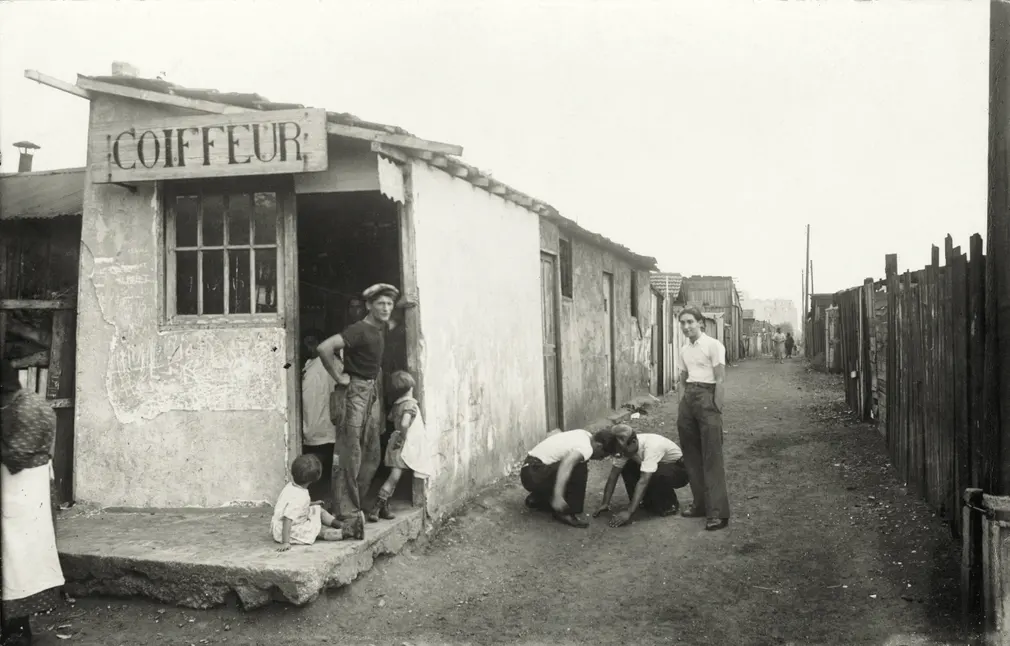Life in "La Zone": Paris’ Forgotten Underworld
- dthholland
- Jul 1, 2024
- 4 min read

In the late 19th and early 20th centuries, Paris underwent a radical transformation. The sweeping modernization efforts led by Georges-Eugène Haussmann, the city’s prefect, redefined the urban landscape, creating the Paris we recognize today with its wide boulevards, grand public buildings, and efficient sewage system. However, this transformation also had a dark side, one that is less celebrated in the history books: the creation of "La Zone."
The Birth of La Zone
"La Zone" referred to a strip of land encircling Paris, originally occupied by the city's defensive walls, which were deemed obsolete and dismantled starting in the late 19th century. The fortifications, known as Thiers’ walls after their constructor Adolphe Thiers, were built between 1841 and 1844. However, with advancements in military technology and urban planning needs, these walls were eventually rendered unnecessary.

As the city expanded and modernised, the land where these walls once stood became a liminal space, a buffer between the glittering metropolis and the rural hinterland. This zone, unclaimed and unwanted by the city’s developers, gradually became a refuge for the city's poor, the homeless, and migrant peasant workers.
The Inhabitants of La Zone
By the turn of the century, La Zone had developed into a sprawling shantytown with a population of approximately 30,000 people. These residents were primarily those who had been displaced by Haussmann's renovations, which demolished working-class neighbourhoods to make way for grand boulevards and opulent apartment buildings. Unable to afford the new, more expensive housing within the city, these people found themselves pushed to the margins.

Migrant workers from rural France also found their way to La Zone, seeking employment in the booming industrial sector of Paris but unable to secure permanent housing. The combination of displaced Parisians and migrant workers created a diverse yet impoverished community living in makeshift huts, often constructed from salvaged materials.

Living Conditions and Daily Life
The living conditions in La Zone were harsh and precarious. The shantytown lacked basic infrastructure such as running water, sanitation, and proper roads. This led to significant health problems, including frequent outbreaks of diseases such as cholera and typhoid.
Despite the adversity, the residents of La Zone formed a tight-knit community. They developed informal economies, trading goods and services among themselves. Small businesses, including bars, shops, and workshops, sprang up, creating a semblance of normalcy amid the squalor.

The Gleaners of La Zone
One notable aspect of life in La Zone was the practice of gleaning. Residents would scavenge for discarded food, clothing, and other items in the city's refuse. This practice was vividly depicted in the works of artists and writers of the time. For instance, in his 1906 novel "Les Misérables de la vie," novelist Léon Cladel describes the gleaners of La Zone:
"These wretched souls, driven by hunger and necessity, comb through the detritus of the city's affluence, finding sustenance and survival in the refuse of their wealthier neighbours."

The Social and Political Dynamics
La Zone was more than just a physical space; it was also a symbol of social and economic exclusion. The residents were often viewed with suspicion and disdain by the more affluent citizens of Paris. They were seen as an underclass, perpetually on the margins of society.

This marginalisation was compounded by the legal status of La Zone. The area was officially outside the jurisdiction of the city of Paris, which meant that municipal services and law enforcement were minimal. This lack of oversight allowed for the flourishing of informal economies but also led to higher crime rates and lawlessness.

Efforts to Integrate La Zone
Throughout the early 20th century, there were various efforts to integrate La Zone into the broader urban fabric of Paris. Social reformers and politicians recognized the dire conditions and sought to improve the lives of the inhabitants. However, these efforts were often piecemeal and hampered by bureaucratic inertia and lack of funding.

In the 1920s and 1930s, more concerted efforts were made to clear La Zone and redevelop the area. These efforts culminated in the 1950s with the construction of social housing projects on the former site of La Zone, aimed at providing better living conditions for the displaced populations.

The story of La Zone is a poignant reminder of the human cost of urban modernisation. While Haussmann’s transformation of Paris is often celebrated for its visionary grandeur, it also resulted in the displacement and marginalization of thousands of the city's poorest residents. La Zone stands as a testament to their resilience and ingenuity in the face of adversity.

This forgotten chapter of Parisian history sheds light on the complexities of urban development and the enduring struggle for social justice in the modern city. As we walk through the streets of Paris today, it is important to remember the hidden histories that lie beneath our feet, stories of survival and community amid the shadows of progress.
Sources
Cladel, Léon. Les Misérables de la vie. Paris: 1906.
Garside, Patricia. "La Zone: The Forgotten Parisian Shantytown." Journal of Urban History 35, no. 3 (2009): 457-475.
Harvey, David. Paris, Capital of Modernity. New York: Routledge, 2003.
Pinkney, David H. Napoleon III and the Rebuilding of Paris. Princeton: Princeton University Press, 1958.




















































